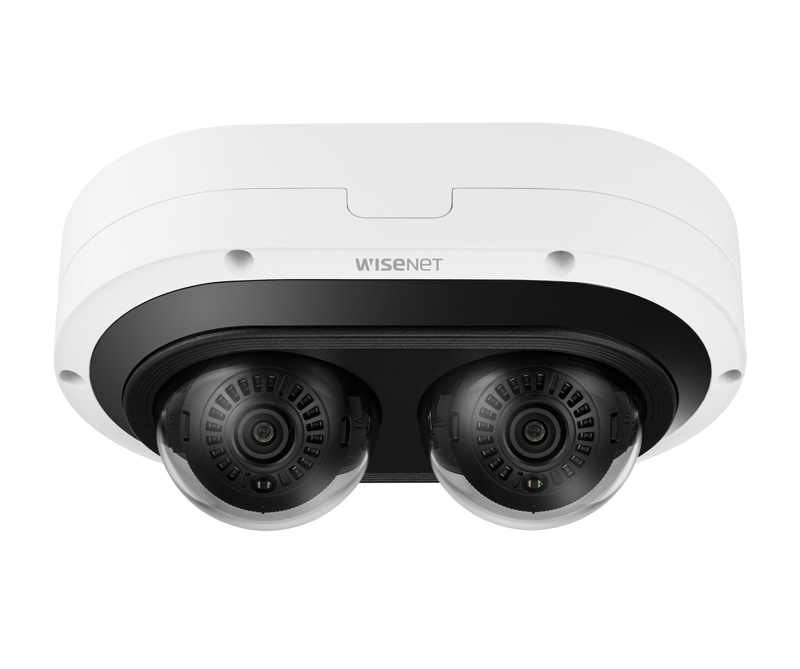 The PNM-C7083RVD multi-directional camera is a dual dome device that provides two 2MP views that can be individually set to suit locations while requiring only one network lead. The cameras provide AI object classification analytics and low light operation. They are IP66 & NEMA4X environmentally rated with an IK10 impact protection rating. Overall dimensions are 215 (W) x 135 (D) x 93.2 (H) with a weight of 1330g.
The PNM-C7083RVD multi-directional camera is a dual dome device that provides two 2MP views that can be individually set to suit locations while requiring only one network lead. The cameras provide AI object classification analytics and low light operation. They are IP66 & NEMA4X environmentally rated with an IK10 impact protection rating. Overall dimensions are 215 (W) x 135 (D) x 93.2 (H) with a weight of 1330g.
Getting started
The camera must be powered from a PoE+ source that can either be a suitably rated network switch port or midspan injector. The camera requires a 20W PoE+ source with a typical demand of 15.5W though this did hover around 20W when all four infrared LEDs are manually powered to maximum brightness.
The camera has an aluminium casing that is mounted onto a backing plate for wall or ceiling fixing. Firstly, to gain access, the dome cover must be removed by releasing the six captive Torx security screws. This cover weighs just under 350 grams and has no securing cable. Once removed the main camera assembly can be separated from the back plate by releasing two captive Torx security screws.
The manual adjustments to Pan, Tilt, and Rotate the two camera modules can be clearly identified on the assembly and the PoE+ RJ45 connector at the top of the unit has good cable access with a knockout for conduit connection. Opposite this connector is a slot for the micro-SD card. This is a single slot and can accept up to 512GB cards.
At the bottom of the unit is a reset switch to the left, and at the right is a type ‘B’ USB connector that can be used to temporarily add a Wi-Fi dongle for engineer video monitoring (1280 x 720) using the Wisenet application on a mobile device.
Operation
Once powered up, the camera is initially DHCP enabled so will be allocated an address in the current network range, if not, its default IP address of 192.168.1.100 will be used. The Hanwha Wisenet Device Manager software can be used to search for the camera on the network and this also allows initial password setting and fixed address setting.
Using a browser to connect to the camera gives full access to the image and configuration. At first connection a reasonably strong password entry is enforced. This must be at least 8 characters using three character types or at least ten with two character types. Consecutive and repetitive characters are restricted.
Once the password is suitably set, the display shows the Wisenet browser page with the view of the channel 1 camera.
The device works with all major browsers including Edge, Firefox and Chrome, the unsupported IE provides most functionality but not recorded image replay. Good results were also achieved with iOS and Android based tablet browsers if the camera is on a network with Wi-Fi connectivity. Seventeen languages are supported.
Read the full review in the August 2022 edition of PSI magazine.


